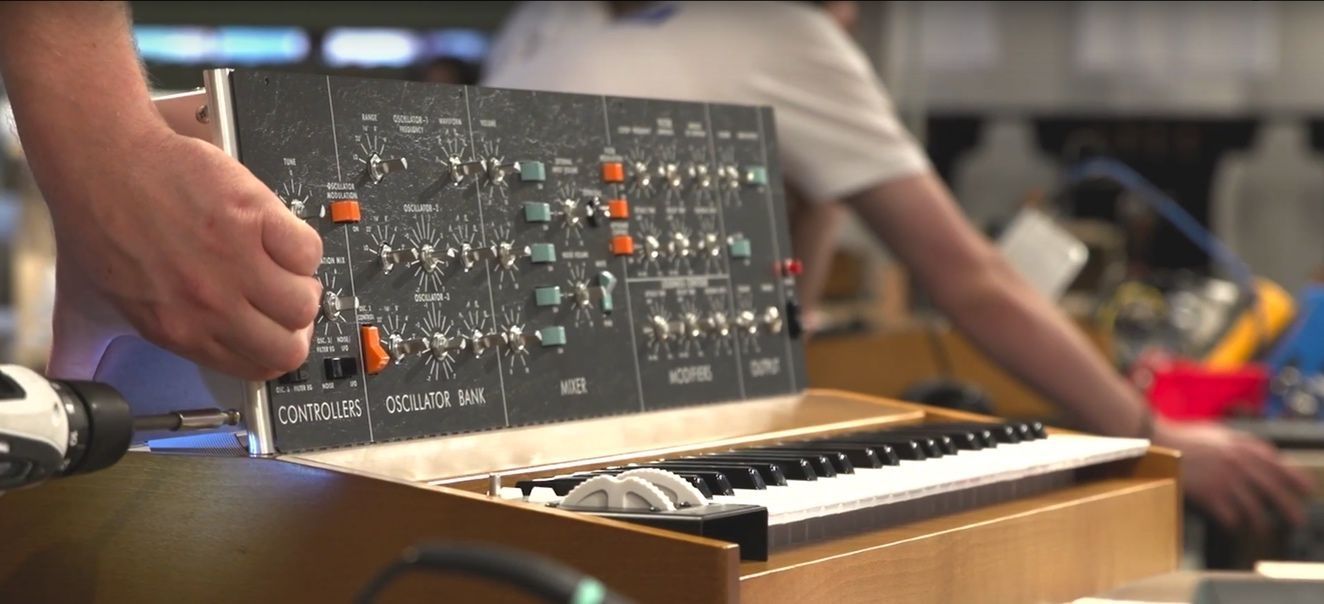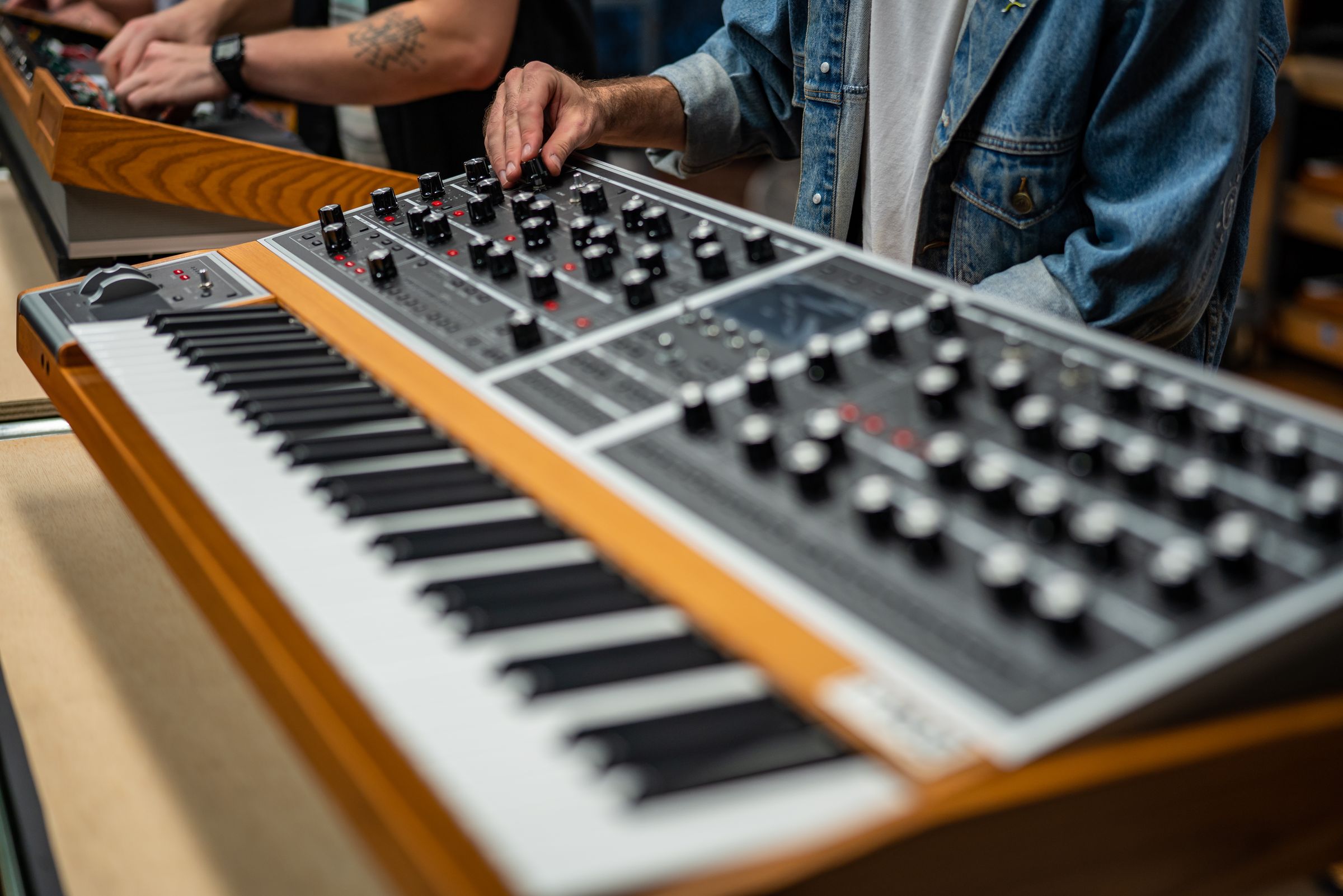The humble synthesizer has, like many other instrument categories, seen countless iterations over the years. From the rare analog prototypes of the early 20th Century to the all-encompassing like the Moog One and the Sequential Prophet XL, it’s been a long and vibrant journey.
Despite the bumpy ride, synths are more popular than ever before. There’s more choice, more sounds at your disposal, and arguably most crucially – more affordable options. That’s got many people wondering: what makes certain synths so expensive?
In a nutshell:
- The increasing cost of components / shrinking profit margins
- Manufacturing analog synths is a detailed, meticulous process
- Polyphony is pricey!
- People pay for premium quality, just like guitars
- Increased popularity – supply vs. demand!
The cost of components
We live in an increasingly digitalised world. With this in mind, analog electrical components (for synths and similar applications) aren’t so much becoming scarce as exclusive. They’re proving harder to get hold of, especially in the volumes needed for mass production – we see similar patterns with the production of effects pedals.
Moog sent the synth community into a frenzy after their 2018 statement regarding US price hikes on components – this was a response to Trump’s increased tariffs on imported components. While some debated the urgency of their response, it was an insightful wakeup call for synth users the world over.
Analog vs. digital
Again, the digital world has changed the way we approach things. Technology is more accessible than ever before; mobile phones take care of just about every daily tech task these days. But who wouldn’t want to carry 30+ gadgets’ worth of functionality in their pocket?
That brings us onto digital instruments. Digital and virtual instruments offer comparable quality and choice (in some cases, quite a bit more). The sound of a lengthy chain of analog components can be costly due to the manufacture involved, while a digital algorithm can replicate this (sometimes pretty accurately!) for a fraction of the price. This is one of the reasons why analog synths are generally more expensive. And once you start adding extra attractive components like LFOs, envelopes, filters, distortion, modulation, ambience…you get the picture. Not to mention the love and attention to detail involved in producing a top-quality analog synth. Better components and a thoroughly refined manufacture process is bound to result in a better product – which will probably cost quite a bit more. But by golly, it’ll be lovely…
This also means that when you find a premium digital synth, you know it’s going to be full to the brim with killer features. So is the analog sound worth the money? You be the judge…
Polyphonic vs. monophonic
Let’s talk about voices. The number of voices a synth has determines the number of notes that can be played simultaneously. A single-voiced synth, also known as monophonic, can play 1 note at a time. A multi-voiced synth, aka polyphonic, can play more than 1 – simple as that. Poly synths tend to be more expensive than mono synths – but why?
Many of the most popular synths on the market are monophonic. Dave Smith/Sequential, Korg, Moog and Behringer all produce sought-after mono synths at different prices. Let’s take one of the more affordable ones as an example: the Behringer Model D, around the £300 mark. If we wanted a 16-voice synth, we’d need the equivalent of 16 Model Ds. So £300 x 16 = £4800. Now this is pretty basic stuff, and we may be simplifying quite a bit, but you get the idea. That’s why polyphonic synths tend to cost more – there’s way more circuitry involved!
Synths vs. guitars
We could compare synth prices to those of any instrument group and we’d get a similar result. But seeing as I’m a guitarist who’s still relatively new to the synth world, I’m going to stick with guitars.
There are affordable guitars, and there are premium guitars. There’s also a big old area in the middle that tends to tick quite a few boxes. The exact same thing could be said about synthesizers. Your compact, monophonic desktop synths are your versatile entry-level guitars. Your 16-Voice Moog One polyphonic synths are your Private Stock PRS guitars. Both have their place in the heart of a musician, for different reasons. Starting to make sense?
While you’re here, check out our article on what makes guitars expensive.
An ever-changing market
Synthesizers have always been popular. Towards the tail end of the ‘80s and into the ‘90s, the industry saw a decline. Computers were becoming increasingly crucial in the production of music, leaving traditional synths out of the loop in favour of fresher technology. Dave Smith (under the name of Sequential) even went out of business in 1987.
In recent years, however, we’ve seen a resurgence in ‘retro’ culture. Revived film franchises, recurring fashion trends, the millennial generation – it’s all helped to contribute to a renewed interest in electronic music, particularly involving analog synths. ‘Stranger Things’ anyone? As with any industry, increased demand often results in price changes.
Who makes the most affordable synths?
Synths aren’t all expensive. As mentioned earlier, a number of brands offer great synths – analog, digital, monophonic, polyphonic – at great prices. Popular options include Behringer, Korg, IK Multimedia and Moog among others – each make great units for under £500. Here’s a selection:












Responses & Questions